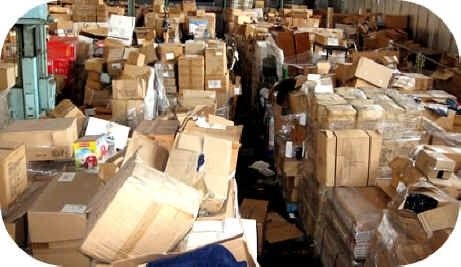An Order Throughput Problem
Applying the Theory of Constraints to a Distribution Center, Part 3
 In Eli Goldratt’s "The Goal," the plant management team discovered that two machines were the critical constraints; all products the plant made contained parts processed by these two machines. Managing these two constraints so that the parts flowed through production became the team’s focus.
In Eli Goldratt’s "The Goal," the plant management team discovered that two machines were the critical constraints; all products the plant made contained parts processed by these two machines. Managing these two constraints so that the parts flowed through production became the team’s focus.
Shrinking parts-run sizes was one of the techniques that they used to help speed the orders through the plant. Traditional manufacturing wisdom is that longer runs are more productive, that the cost of setting up the machines spreads across more parts. The reality is that larger parts runs are less efficient from a cash-flow point of view, or from a total-plant-throughput point of view. The larger the parts run, the more working capital becomes work in process (WIP) inventory. The larger the parts run, the more likely other critical parts are waiting for the resource while it creates what could be excess WIP inventory.
I can make the same argument for distribution center operations. There is a beauty in small orders, or small lots… if you employ them well.
Constraints happen all the time and in different places in a distribution center. A few weeks ago, I wrote about how the receiving operations of a DC became the constraint from the excessive number of small LTL deliveries. In that example, consolidating the LTL shipments onto fewer carriers helped open up the capacity of the receiving operations. But you can open up capacity and clear out constraints by breaking up blocks or orders into smaller and smaller chunks.
The example for this article is a DC where the staff picked orders from standard selective pallet racks. The orders consisted of three different types of picks: picks from the first two levels of the racks, picks from the third through eighth levels of the racks, and picks from the ninth level of the racks. Pickers using carts pulled products out of the first two levels, while reach truck drivers pulled the product from the upper levels. Only a few reach trucks could serve the ninth level.
The DC had an order throughput problem. They wanted to increase the lines picked in a big way. Throwing more floor pickers at the problem could increase the lines picked, but that did not help throughput, as in completed orders. The sales team did not care about lines picked, they cared about lines shipped, and lines could ship only when the order was completed.
A review of the orders and the productivity of the different pickers showed that the floor pickers not only picked most of the lines in the orders, but they had the best production rates—over twice as high as the fork truck pickers. That was obvious from watching the fork operators, who had many more physical handling steps per pick than the floor pickers. The fork picker had to drop the pallet, pick the parts, put the pallet away, and then pick up their pallet to move to the next pick.
The management team understood this, and they attempted to get more reach truck operators picking. More reach trucks working the aisles, with more floor pickers in between, created congestion in the aisles. As a reach operator worked a pick, other trucks and floor pickers had to wait until the operator lowered his forks to move past the truck. The congestion plugged up the aisles, and lowered productivity and total throughput.
 Even with the congestion, the floor pickers completed their work faster. The pickers delivered their orders to a staging area that fed into labeling tables where manual operators applied preprinted customer labels. The floor pickers dropped their orders in the staging area and started on the next order. This created chaos, as partial orders started to build up in the staging lanes in front of the label tables.
Even with the congestion, the floor pickers completed their work faster. The pickers delivered their orders to a staging area that fed into labeling tables where manual operators applied preprinted customer labels. The floor pickers dropped their orders in the staging area and started on the next order. This created chaos, as partial orders started to build up in the staging lanes in front of the label tables.
Management decided to introduce an additional step and some metering processes to sort out the chaos. Truck pickers would start their part of the order first, and then the floor pickers their part of the order. It sounded good in theory, but since the floor pickers completed their work faster, the trucks never really could get ahead. At one point, the managers told the floor pickers to sit down when they completed their order if the trucks fell behind. Still, every shift shotgun started the picking process, so the congestion started at the beginning of the shift and continued through the rest of the day.
The pickers managed order release, so a picker would rifle through the orders in the bin, picking out an order that they liked (perhaps more lines, or more units per line), and not in the sequence of the due dates. A truck picker could be working on a long order, and the floor pick order could get passed over for hours, or even for an entire shift. Even with the use of a large tracking board, orders did not get completed in sequence, or quickly.
The staging areas continued to be chaotic. Orders could sit for hours, even days, before moving to the label lines. The order backlog continued to build. Lines picked were always 30–40 percent higher than lines shipped. The sales team became more frantic as customers complained about late orders. Something had to give.


